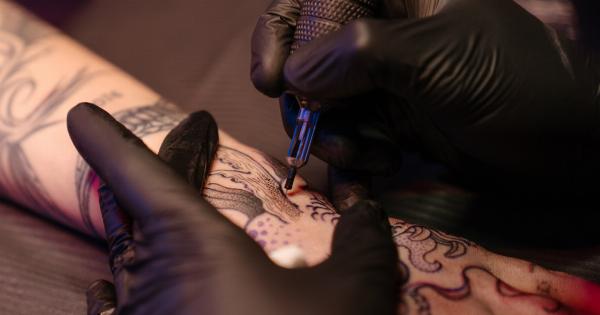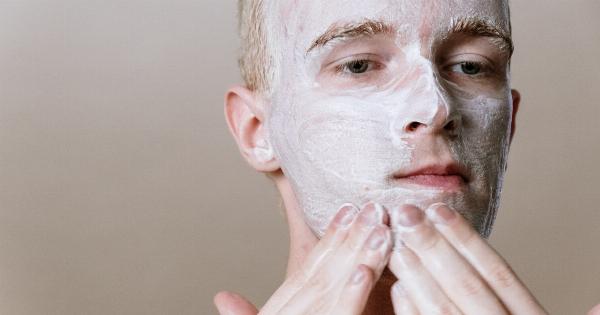Getting a tattoo is a personal choice that allows individuals to express their creativity, tell a story, or commemorate a loved one. However, what seemed like the perfect tattoo at one point may no longer be relevant or desirable.
Thankfully, advancements in technology have made it possible to remove unwanted tattoos through laser tattoo removal procedures. But is laser tattoo removal safe for all skin types? Let’s delve into this question and explore the factors that influence the safety and effectiveness of laser tattoo removal for different skin types.
Understanding Laser Tattoo Removal
Laser tattoo removal is a widely accepted method for eliminating unwanted tattoos. It involves using laser technology to break down the tattoo ink particles embedded in the skin.
The laser emits intense beams of light that are selectively absorbed by the tattoo pigment, causing the ink to fragment into smaller particles. These fragmented particles are then processed and eliminated by the body’s immune system over time.
The Role of Skin Type in Laser Tattoo Removal
Various skin types have different levels of pigmentation, which can impact the success and safety of laser tattoo removal. Laser devices for tattoo removal target the pigments within the skin.
The laser beam is primarily absorbed by the tattoo pigments, causing them to shatter into tiny fragments. However, if the surrounding skin has higher levels of pigmentation, it may also absorb some of the laser energy, potentially causing unwanted side effects.
Skin Types and Laser Wavelengths
One crucial factor in laser tattoo removal is selecting the appropriate laser wavelength for each skin type. Different tattoo colors and pigments respond differently to specific wavelengths of laser light.
For instance, darker tattoo pigments, such as black or dark blue, are most effectively treated with Q-switched Nd:YAG lasers, while lighter colors, like green or yellow, may require different laser wavelengths.
When it comes to skin types, individuals with lighter skin tones typically respond better to laser tattoo removal. Their skin absorbs less laser energy, minimizing the risk of adverse reactions such as hypopigmentation or hyperpigmentation.
However, advancements in laser technology have now made it possible to safely and effectively remove tattoos from individuals with darker skin tones as well.
Assessing Risks for Different Skin Types
It is crucial to consult with a qualified and experienced dermatologist or laser technician who can assess the risks involved in laser tattoo removal based on your specific skin type.
During the initial consultation, the professional will evaluate factors such as natural skin color, risk of hyperpigmentation or hypopigmentation, and the tattoo’s location, size, and colors.
With advancements in laser technology, dermatologists can now customize treatment plans to minimize the risk of side effects in individuals with darker skin types.
They use specific laser wavelengths, shorter pulse durations, and adjust energy settings to ensure safe and effective tattoo removal.
Laser Tattoo Removal Side Effects
While laser tattoo removal is widely considered safe, it is essential to be aware of potential side effects. These side effects can affect individuals with all skin types but may vary in severity. Common side effects include:.
1. Temporary Discomfort
During laser tattoo removal, individuals may experience mild to moderate discomfort, similar to the sensation of a rubber band snapping against the skin.
However, this discomfort can be minimized through the use of topical anesthetics or cooling techniques.
2. Redness and Swelling
After the laser treatment, individuals may notice temporary redness and swelling in the treated area. This is the skin’s natural response to the laser energy and typically subsides within a few hours to a couple of days.
3. Blistering and Crusting
In some cases, blistering and crusting may occur after laser tattoo removal. This is considered a normal part of the healing process, and it is essential not to pick or scratch the blisters to minimize the risk of infection.
4. Hyperpigmentation
Individuals with darker skin types may be more prone to hyperpigmentation, which is the darkening of the skin in the treated area.
This usually resolves on its own over time, but it is important to protect the treated area from sun exposure to prevent further pigmentation changes.
5. Hypopigmentation
In rare cases, laser tattoo removal may cause hypopigmentation, which is the lightening of the skin in the treated area. Like hyperpigmentation, this side effect often resolves over time but may necessitate additional treatments or interventions.
Ensuring Safety for All Skin Types
To ensure optimal safety for all skin types during laser tattoo removal, it is crucial to follow these guidelines:.
1. Consult with a Qualified Professional
Choose a qualified dermatologist or laser technician experienced in laser tattoo removal. They will have the necessary knowledge and expertise to assess your skin type and develop a customized treatment plan.
2. Be Transparent About Skin Type
During the initial consultation, be open and honest about your skin type, previous treatments, and any existing skin conditions. This information will help the professional tailor the laser settings and treatment approach specifically for your needs.
3. Follow Pre and Post-Treatment Instructions
Before the laser tattoo removal procedure, your dermatologist or technician will provide you with specific instructions to prepare your skin. It may involve avoiding sun exposure, discontinuing certain medications, or applying protective creams.
Similarly, after the treatment, following the recommended aftercare instructions is vital for optimal healing.
4. Schedule Multiple Treatment Sessions
Tattoo removal typically requires multiple treatment sessions spaced several weeks apart. This allows the body to flush out the fragmented ink particles gradually.
Follow the recommended treatment schedule provided by your dermatologist to maximize the effectiveness of the laser tattoo removal process.
Conclusion
While laser tattoo removal is generally safe for all skin types, individuals with darker skin tones may have a higher risk of side effects such as hyperpigmentation and hypopigmentation.
However, with the right selection of lasers, customized treatment plans, and proper aftercare, safe and effective tattoo removal can be achieved for individuals with all skin types. It is essential to consult with a qualified professional to assess the risks and benefits based on your specific skin type, tattoo characteristics, and desired outcome.






























